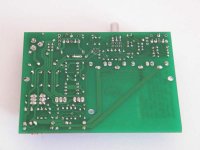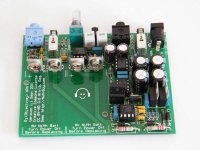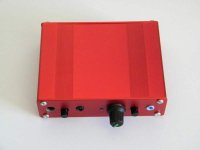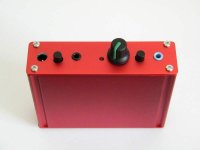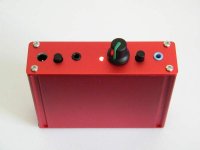I put together a list of headphones that can make use of the O2's amplification and buffer capabilities. Compared to what a typical PMP can provide, the yellow indicates a headphone that needs more.
This is great.
What do you mean by 'buffer' capabilities? And what's a 'pmp'?
cross out this: Another list that would be fantastic is of headphone/source combos that would benefit from an O2's amplification.Should have read to the end. Couldn't find a 'strike'/'cross-out' option. Is there one?
Last edited:
This is great.
What do you mean by 'buffer' capabilities? And what's a 'pmp'?
cross out this: Another list that would be fantastic is of headphone/source combos that would benefit from an O2's amplification.Should have read to the end. Couldn't find a 'strike'/'cross-out' option. Is there one?
Buffer meaning current drive, in other words a PMP (personal music player aka ipod) may have enough voltage output but would distortion from lack of current drive into a given usuallly high load (ie low ohm phones.) The U3 NJM4556AD's are the fantastic buffers in the O2. They add no voltage gain but lower the output impedance (i.e. gsupply current/amperage buffer.)
Just thought i could share the pics of my finished O2.
Not the most professional look of the front panel holes, but i don't really have the apropriate gear to make them better. For me, they are good enough.
Not the most professional look of the front panel holes, but i don't really have the apropriate gear to make them better. For me, they are good enough.
An externally hosted image should be here but it was not working when we last tested it.
An externally hosted image should be here but it was not working when we last tested it.
An externally hosted image should be here but it was not working when we last tested it.
An externally hosted image should be here but it was not working when we last tested it.
An externally hosted image should be here but it was not working when we last tested it.
An externally hosted image should be here but it was not working when we last tested it.
Seems like the forum is not friendly accepting imageshack links...
I can't edit my previous post, so i'll try again.
The holes were made with a dremel like tool, with a small drill and widening the holes slowly, checking the fit now and then. Not the best method, but the only one i could find.
I can't edit my previous post, so i'll try again.
The holes were made with a dremel like tool, with a small drill and widening the holes slowly, checking the fit now and then. Not the best method, but the only one i could find.
Attachments
Last edited by a moderator:
 rasunsen, please read this thread:
rasunsen, please read this thread:http://www.diyaudio.com/forums/everything-else/183084-pictures-why-not-attach-them.html
I will fix the photos in your post.
Yea, I can't imagine 1V thru Grado's even a breif transient, I hought .5Vrms was the edge of sanity with these drivers. I'm still scratching my head on the more power section of the blog. I brought up about how the AKG Sextettes need close to 200mW (almost twice the 115db number) yet the real world Grados are opposite (much less than the chart). I am glad RS published this 'cause its an important issue.
Possibly the ratings/specs for sensitivity are not such a good tool for estimating power needs because the manufacturers test methods are all over the map and more of a sales/marketing number than a meaningful (say NIST traceable ASTM) spec?
I definitely think that measurement data from the manufacturers needs to be accurized. I was looking at Sennheiser's website and found that one source listed 103dB/V and another 115dB/V. I suspected it may have been 115dB/V and 103dB/mW, but the numbers don't correlate when I run the math. So I just figured I'd leave it at 103dB/V and call it good.
Also, I have determined that AKG's numbers are off (as has Tyll Hertsens). My case was with the K171 being quieter at a certain power than the K272, though AKG claims a 3dB efficiency advantage by the K171. I found it was the other way around.
Sane listening levels for me are usually in the mid 70's which puts my headphones requiring about 10µW. That's crazy. They still react differently with different amps, and I suspect it's the damping factor at play.
How would one specify headphones better? My AKGs are listed at 55 Ohm, but they measure 60-120 across the spectrum. Their efficiency isn't as good as specified, either.
Last edited:
UK - NiMH Batteries at good price
If anyone is looking for decent NiMH batteries at a reasonable price, in the UK at least you can pop down to your local Lidl store, where they have 'Tronic' brand 9v 200mAH batteries for £2.99 each. This is one of their special offers, so they are likely to run out of stock fast, and it will be several months before they restock.
I have used these in my O2 and can attest to their suitability; I think they are the 8-cell type, as they definitely charge up to over 8.4 volts; the black finish also goes nicely with the black PCB!
If anyone is looking for decent NiMH batteries at a reasonable price, in the UK at least you can pop down to your local Lidl store, where they have 'Tronic' brand 9v 200mAH batteries for £2.99 each. This is one of their special offers, so they are likely to run out of stock fast, and it will be several months before they restock.
I have used these in my O2 and can attest to their suitability; I think they are the 8-cell type, as they definitely charge up to over 8.4 volts; the black finish also goes nicely with the black PCB!
If anyone is looking for decent NiMH batteries at a reasonable price, in the UK at least you can pop down to your local Lidl store, where they have 'Tronic' brand 9v 200mAH batteries for £2.99 each. This is one of their special offers, so they are likely to run out of stock fast, and it will be several months before they restock.
I have used these in my O2 and can attest to their suitability; I think they are the 8-cell type, as they definitely charge up to over 8.4 volts; the black finish also goes nicely with the black PCB!
Now that was a bargain! Thanks greenalien!
Brgds
So I saw some discussion earlier about a BOM change to fix a battery power-related sound issue. So I gave it a try and about 5 or 6 hours in, there was a very loud popping noise. Thankfully I didn't have my headphones on at the time, so I was checking all the electronics on my desk to find the culprit!  At first I thought it was my iPod's hard drive dying. This click was really loud! I'm surprised it didn't destroy my RE-262s (IEMs).
At first I thought it was my iPod's hard drive dying. This click was really loud! I'm surprised it didn't destroy my RE-262s (IEMs).
Just confirming more than anything else... I hope that was the issue addressed with the BOM change
Just confirming more than anything else... I hope that was the issue addressed with the BOM change
So I saw some discussion earlier about a BOM change to fix a battery power-related sound issue. So I gave it a try and about 5 or 6 hours in, there was a very loud popping noise. Thankfully I didn't have my headphones on at the time, so I was checking all the electronics on my desk to find the culprit!At first I thought it was my iPod's hard drive dying. This click was really loud! I'm surprised it didn't destroy my RE-262s (IEMs).
Just confirming more than anything else... I hope that was the issue addressed with the BOM change
Kibble Fat.
It bettered things but as I wrote early in the thread it doesn't solve it for everyone. This weakness is built in to the realworld O2 and the model works for everyone in an ideal world. If you are afraid of your headphones it might be better to go back to the old BOM and use the oscillation as a low battery warning IF you think it worked better with your cans. But you didn't have anything connected at the time - right - so the rebound could have taken whatever time... So, do the rest of us wan't a constant drain even if nothing is using the batteries. I wouldn't.
Brgds
Last edited:
So you think I have the latest configuration? I ordered parts a week before the boards shipped out.
In that case you probably have by the original BOM and could try RS new values since you by your post seem to be on the edge.
Brgds
I'm finally getting my Mouser order ready to go...can anyone tell me if the BOM dated 2 Dec 2011 is the most current??? Thanks,
Yes it is. Easy way to tell is if R9 is 33.2kΩ. If so, then you have the latest.
How are they shorting out ?
Channels are dropping on both the input and output and wiggling the plug temporarily solves the issue but it comes back.
It looks like the Switchcraft 35RAPC4BHN2 *may* fit, but I can't say for sure as the area behind the barrel is a little different.
http://www.switchcraft.com/Drawings/35rapc__hn2_cd.pdf
- Home
- Amplifiers
- Headphone Systems
- The Objective2 (O2) Headphone Amp DIY Project
